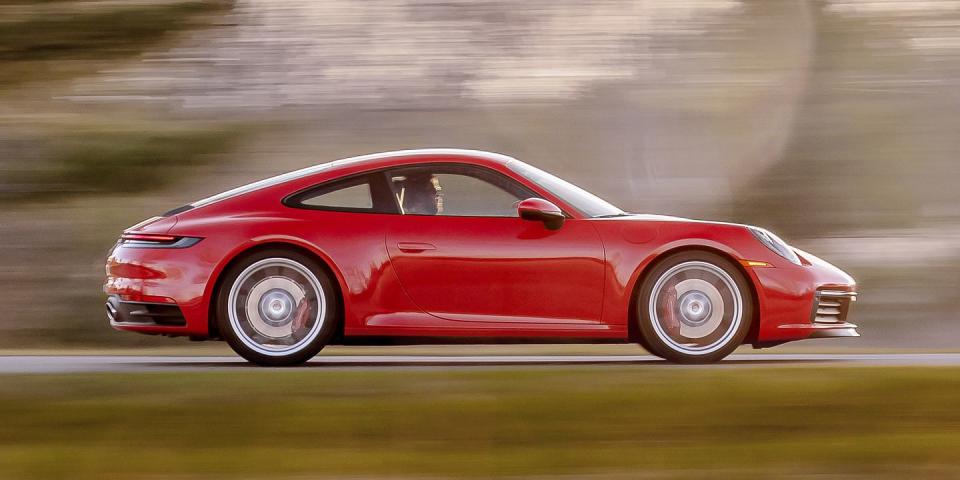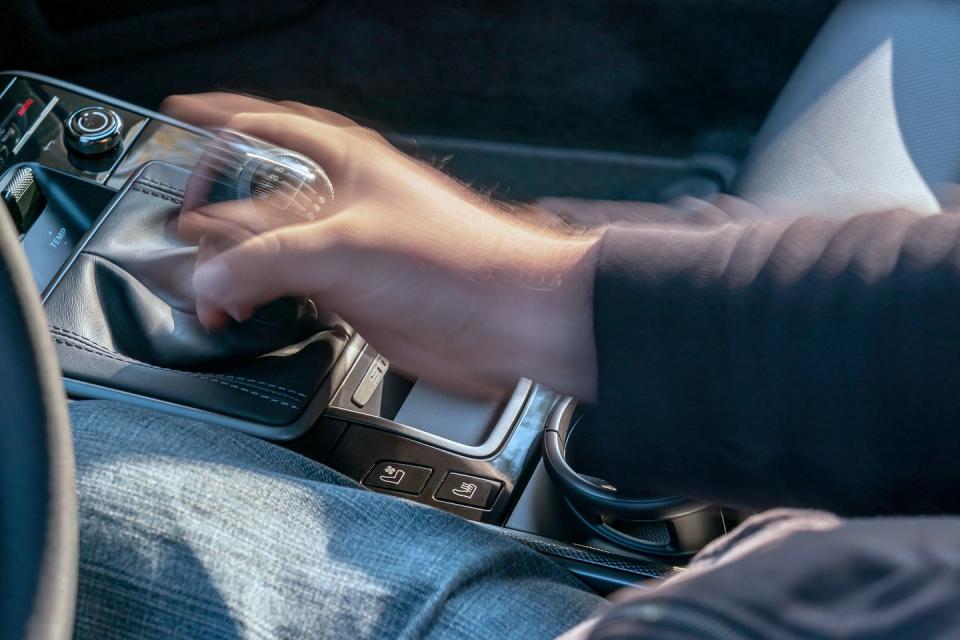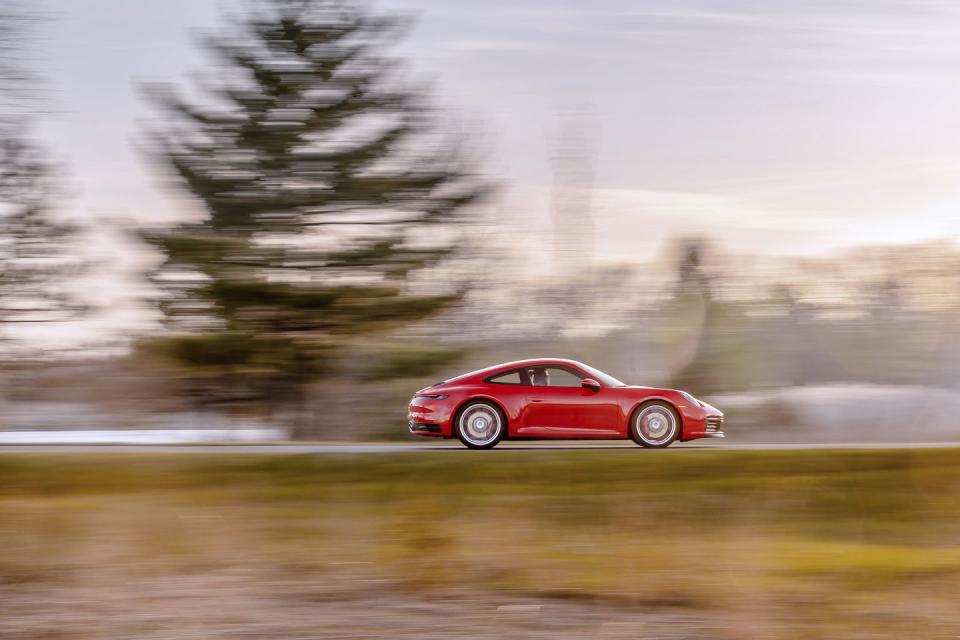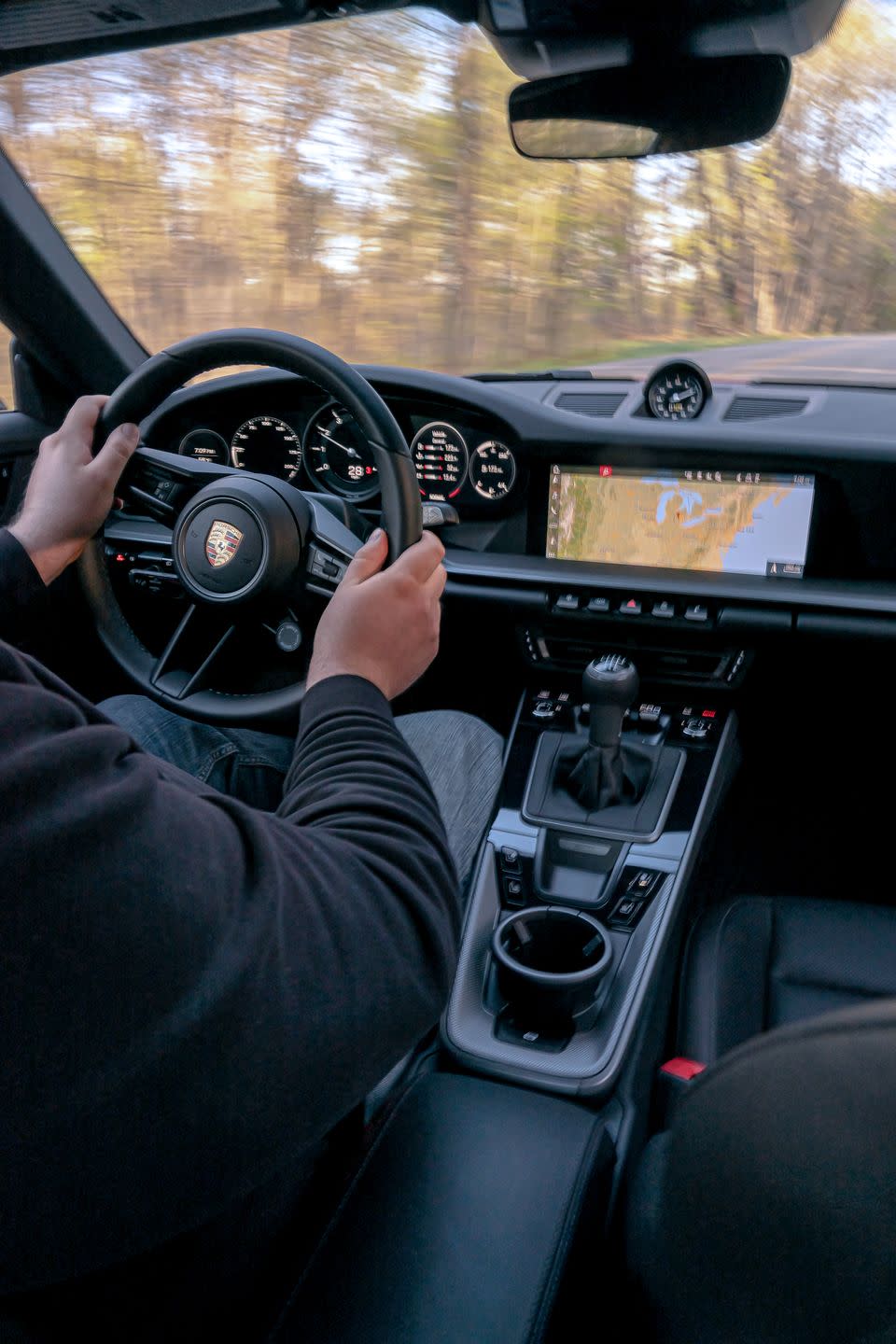The Magnificent Seven: 2020 Porsche 911 Manual

Porsche made us wait a year before producing a row-it-yourself version of its latest-generation 911, indicating that we live in a world where a sports car with a manual gearbox is no longer a priority. Sadly, we can see a future where something as pure and good as a new 911 with a stick shift might not be a thing.
But we'll embrace it while we still have it. It was definitely worth the wait. The 992-generation 911 may have silly electronic door handles and be larger and heavier than the last, but it remains a great driver's car, made even better by an old-timey manual transmission.
Porsche launched this 911 in 2019 exclusively with an eight-speed dual-clutch automatic. The once standard manual only recently became available as a no-cost option on the car's S and 4S models. The "no-cost" aspect of this looks like a win until you remember that Porsche used to charge $3200 more for the automatic. Oh well.

While the manual's limited availability in the lineup is a downer, the gearbox remains a delight. This seven-speed is a totem of mechanical rightness that slots through well-defined gates with satisfyingly positive engagements. Porsche put the leather-wrapped knob at the perfect height and distance from the driver. Reaching for seventh gear way out there in its own plane remains a bit disorienting, but we'll take the weirdness of downshifting to sixth over pulling a paddle. Compared with the automatic's silly gear selector—which has been likened to everything from an electric razor to genitalia—the manual's shifter appears serious and substantial, sort of like the difference between a water pistol and a Winchester.
Even its clutch pedal draws you in, with smooth and progressive takeup. Along with a good range of motion, the pedal telegraphs the clutch's exact level of engagement with firm resistance, yet it's light enough not to strain your leg in gridlock.
Using your right hand and left foot to change gears pulls you closer to the flat-six perched behind the wheels. Sure, this twin-turbo 3.0-liter's 443 horsepower and 390 pound-feet of torque mean you don't really need to downshift to blast around slower traffic, but the joy of feeling more involved makes you want to drop a gear or two at every opportunity.

One of the greatest threats to the manual's existence in the 911 is Porsche's dual-clutch automatic, the PDK. It's a staff favorite among autoboxes. It requires less effort than the manual and snaps off seamless ratio changes with clairvoyant acuity. Those robotic abilities give it an advantage on a track, too. It's smart enough to downshift into the correct gear under braking, and it upshifts quicker than a human can. Opting for the manual offers no fuel-economy benefit; it earns the same 20-mpg EPA combined fuel-economy rating as the automatic. Factor in the extra 0.7 second that it takes the manual Carrera S coupe to reach 60 mph and it's hard to blame the vast majority of 911 buyers who have given up on the DIY transmission.
Some of this blame can be placed on Porsche, though. To protect the driveline from catastrophic abuse, Stuttgart limits the engine to 3500 rpm when the car is stopped. Dump the clutch at that engine speed and the six bogs. Extracting the best from the car requires a careful slip of the clutch, which will undoubtedly shorten its life. But the small hit to acceleration times is an acceptable price to pay for increased driving pleasure.

Porsche expects about 20 percent of U.S. buyers to go for the manual, which is similar to the mix for the outgoing 991.2 model and the highest take rate in any market. In Germany, that figure dips into the single digits. It helps that manual loyalists will find that the 911 really has no competition. Except for the Aston Martin Vantage AMR, the 911's direct competitors are automatic only.
Withering demand for the stick shift makes it that much harder for Porsche to justify the cost of the transmission's engineering and model-specific components and the extra regulatory red tape that comes with meeting ever more stringent emissions and safety standards. Three-pedal buyers miss out on the automatic's electronically controlled differential and must settle for an old-fashioned limited-slip diff, but at least the manual transaxle is about 60 pounds lighter than the PDK. Choosing the stick also limits the available driver aids—you can't get adaptive cruise control, for instance—but that doesn't bother us much.

 Yahoo Autos
Yahoo Autos 